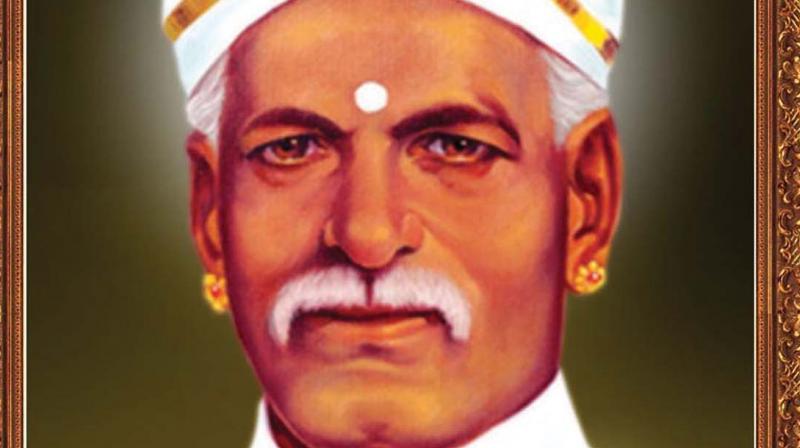His bullock cart gave Dalits their biggest stride
Remembering the great social reformer who strived for the upliftment of Dalits.

Dalits of the erstwhile Travancore won the freedom to tread on public roads in 1900, which was but the beginning of many path-breaking agitations by the great liberator, Ayyan Kali, born on August 28, 1863.
Ayyan’s historic agitations within and outside the Travancore assembly- Sri Mulam Praja Sabha- for the people at the bottom are the firm foundation of Kerala renaissance modernity.
Born of Pulaya parents Ayyan and Mala in Venganur, Ayyan experienced the oppressive caste system and braced to resist the hegemony on multiple fronts. He interacted with sages and philosophers, who initiated social change like Tykad Ayya and Narayana Guru. Tykad Ayya prophesied that Ayyan would be in the legislative assembly and even the kings will admire him.
He breached the ban on avarna entry into public roads and squares through a series of cart rides from 1891 to 1893, the culmination of which was the historic confrontation with caste Hindu militia at Chaliya street near Balaramapuram in Thiruvananthapuram. He used the ‘Villu Vandi’ (decorated bullock cart with two white bulls with bells) for historic freedom of movement agitations all over south Travancore.
Ayyan also broke the imposition of restrictive dress codes and humiliating rituals like Kallu Mala (crude ornament allowed to Dalit women) in Kallu Mala struggles soon after Perinad revolt in Kollam in 1915. He upheld liberties of dress and the right on one’s own body.
For bullock cart rides he used white cloth and turban, defying caste Hindu lords and inviting their fury. He sported a distinct moustache, which again was denied to the avarna in that age by the caste Hindu system. Such corporal insignia were dearly protected by the royal regime through Murajapams, Tuladanam and Hiranyagarbham, apart from regular Brahmin feasts at temples at the expense of the taxpayer.
He started a primary school at Venganur in 1904 but caste Hindus attacked and burned it down. He obtained a royal decree in 1907 for the entry of Dalit children in public schools but the Hindu clergy suppressed the order till 1910; a series of agitations and revolts were required to clinch it in 1915. He initiated a farm stir in Travancore in the manner of Arattupuzha for the educational rights of Dalit children.
The Guru wrote his Jatinirnayam and Jatilakshanam in the context of these historic struggles of Ayyan for basic human and educational rights of castaways or untouchables in Kerala.
Dalit strides owe much to this icon of education, knowledge and human rights. Dalit intellectuals like K K Kochu and Sunny Kapikad, from the community, are a glowing tribute to the farsightedness of the great emancipator. Ayyan is an epitome of grassroots democracy which Kerala renaissance modernity is known for.
(Author is assistant professor of English at Sree Sankaracharya University of Sanskrit, Kalady)

